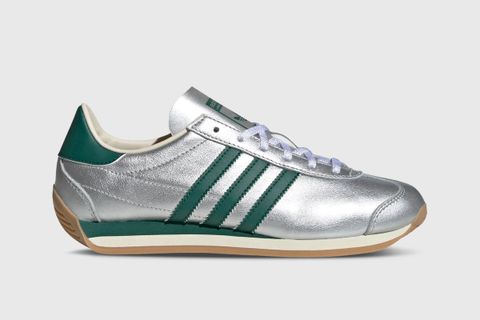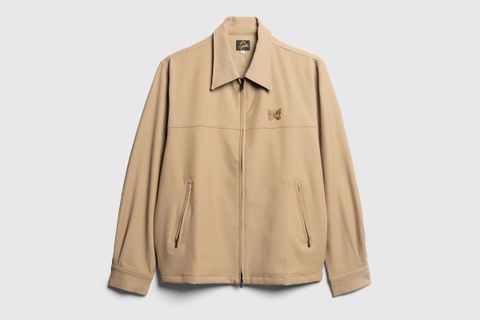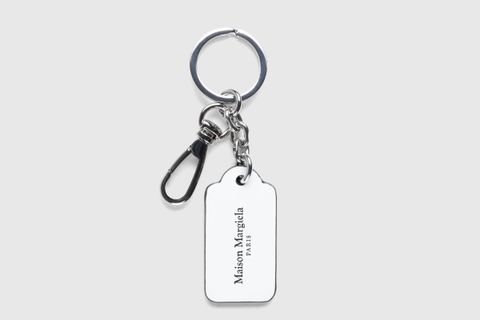Quiet Outdoor Is Not a Trend
All this talk of "quiet" trends has actually grown quite loud. Now that everyone and their rich uncle skeleton has been inundated with explainers, reactions, and rejections of quiet luxury, quiet outdoor is next up. Except it's already here. It's been here for years.
Quiet outdoor is a term born of a data-driven breakdown that ostensibly forecasts 2024's fashion developments. The idea is that consumers, tired of loud and logoed-up outdoor gear, will seek simpler fare that's more understated but no less functional.
It's a logical proposition.
It's also neglecting the fact that quiet outdoor, by that definition, is very much already a thing.
That's the thing about quiet outdoor. It's being positioned as some kind of newfound trend but the reality is that though the phrase "quiet outdoor" is fresh, the concepts it embodies are actually quite established.
For one, the premise that consumers will be drawn to modest outdoor gear is... kinda already the status quo.
Like, ordinary Arc'teryx jackets are already pretty understated by design; the sole bit of branding is a chest and arm-based logo that actually makes them especially desirable.
This was true in early 2020 when longtime Arc'teryx fan Virgil Abloh sent the Hadid sisters down the Off-White™ runway wearing sliced Alpha SV jackets and MM6 made circular The North Face jackets; it was true in 2021 when Jil Sander released collaborative Arc'teryx jackets and bibs; it was true even when, a few months prior, Redditors were asking for opinions on wearing functional jackets in daily life.
All of these moments, even Abloh's statement Off-White™ Arc'teryx jackets, center around fairly versatile adventure gear. The core items aren't neon-tinged parkas and safety orange snowpants — though there's definitely demand for that stuff given the popularity of custom Arc'teryx jackets and Supreme's inkjet-printed GORE-TEX shells.
But at the heart of it all are muted, monochrome layering pieces that've always been worn by ordinary REI shoppers. So, by this metric, quiet luxury doesn't deliver anything new.
The other key element of the "quiet outdoor" thesis predicts that function-driven brands like Arc'teryx and Salomon will shift their focus from utilitarian gear and footwear that just so happen to be stylish to the inverse.
But I think this disregards the inherent popularity of existing technical options, which often read as visibly practical. One of sportswear brand HOKA's most popular sneaker styles of 2023, a puffy mule, was offered in all-black but sold equally well in rich green and cream hues.
The new GORE-TEX iterations of the immensely popular Salomon XT-6 sneaker line are produced in both black and striking beige, either way wearing visibly engineered detailing on the upper that takes them from quiet outdoor to, well, obvious outdoor.
Part of the popularity of these shoes, I'd suggest, is down to the fact that they actually are visibly technical. But they're tastefully technical, as opposed to the comparably garish options plentiful in the running shoe market.
This is why Salomon, content with the XT-6 shoes' success, is turning to make the extremely outdoorsy Speed Cross 3 sneaker its big push for 2024.
If quiet outdoor was simply an adjective that summarized interest in a certain flavor of stylized, streamlined trek gear — understated Arc'teryx jackets, sleek Salomon sneakers, articulated waterproof pants — it'd be more accurate.
Even still, quiet outdoor is not a trend. It's a phenomenon that's been happening for years.
That being said, there is a renewed interest in sophisticated gear riffing on classic outdoor gear. And, by this definition, I see use for "quiet outdoor" as a descriptor.
This is a conceit that's long been bubbling in Japan, where labels like Snow Peak, nanamica, DAIWA Pier39, White Mountaineering, DESCENTE, and domestic-only subsidiary alk phenix epitomize the casual, cool, clean outdoor look that's further discussed in publications like outdoorsy fashion magazine GO OUT.
I wouldn't be surprised if Kim Jones, Japanese style obsessive that he is, took cues from the country's functional obsession to create last year's Dior's Mystery Ranch bags.
And, looking forward, there's much happening in what actually ought to be called the quiet outdoor space, where luxury inclinations intersect with real-world products.
True quiet outdoor is LVMH Prize-nominated fashion label Rier transforming Tyrolean mountaineering inspiration into stylish fleece jackets and tonal Salomon hiking boots. True quiet outdoor is Japanese brand HYKE reuniting with The North Face after a couple seasons of developing its own humbly chic Pertex coats. True quiet outdoor is a Moncler collection designed by JAY-Z. True quiet outdoor is ROA's slick Fall/Winter 2024 collection.
But that's how I see quiet outdoor were it to be utilized more accurately.
By its current application, quiet outdoor is not a trend because it isn't really "trendy" to make contemporary, understated tech gear. It is, instead, just the way things are.
It's akin to quiet luxury in this sense, because both terms canonized long-existing phenomena.
The key difference is that quiet luxury is a byproduct of coded signals sent between the wealthy, a concept as old as, well, wealth.
Quiet outdoor, meanwhile, is a relatively recent byproduct of modern design inclinations wherein classic trek shapes are deemed so good and so useful that they're then streamlined and stylistically refined.
Saying quiet outdoor is a trend is kinda like saying "real clothes" are a trend: hype may come and go but demand will always be there.
Quiet outdoor is not a trend. It's just how people dress.


